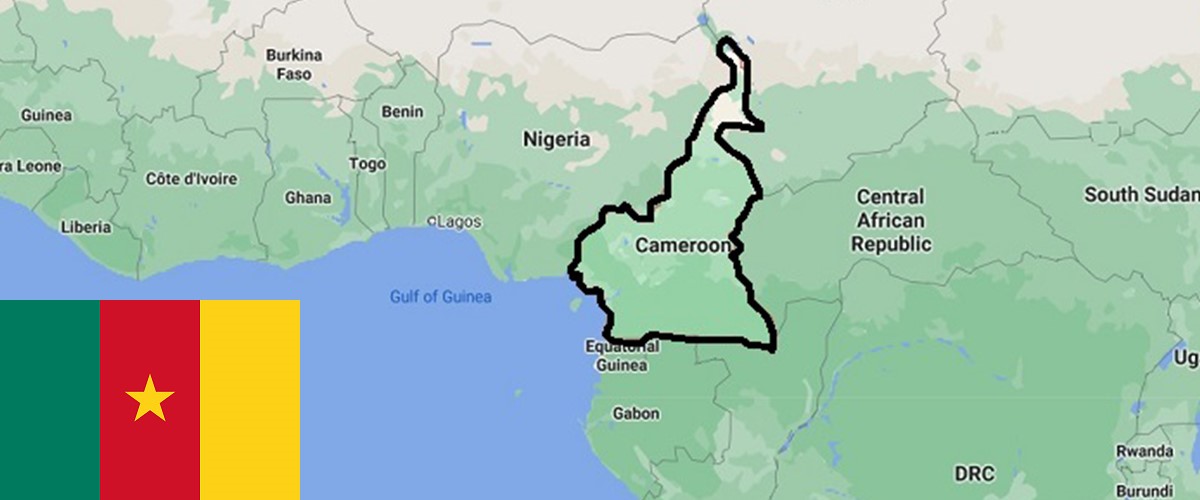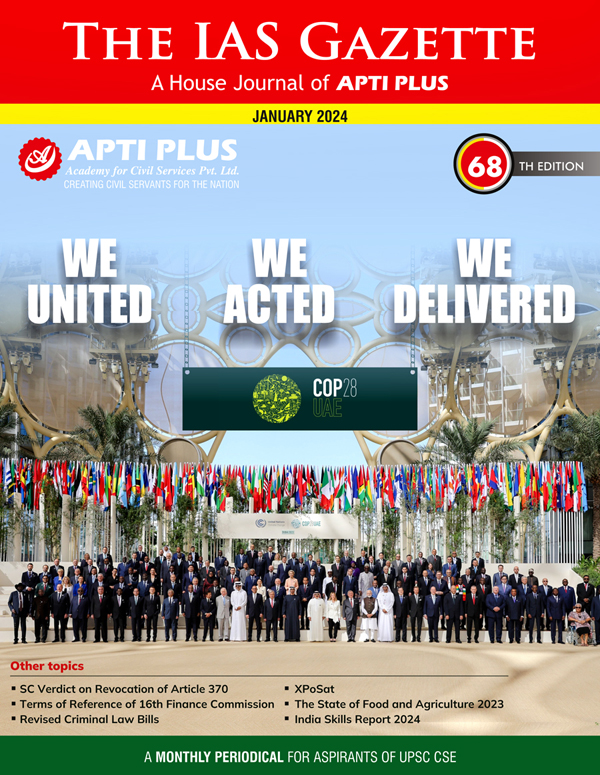Description

Disclaimer: Copyright infringement not intended.
Context
Cameroon adopts Nagoya Protocol to benefit from its rich biodiversity.
Details
Cameroon
- Country lying at the junction of western and central Africa.
- 24th largest country in Africa and 54th largest in the world.
- The capital is Yaoundé, located in the south-central part of the country.
Bordering countries
- It is bordered by Nigeria to the northwest, Chad to the northeast, the Central African Republic to the east, the Republic of the Congo to the southeast, Gabon and Equatorial Guinea to the south, and the Atlantic Ocean to the southwest.
Relief
- Cameroon's diverse geography comprises northern savanna, central highlands, southern coastal plains, and western volcanic mountains, including Mount Cameroon.
Drainage
- Four major drainage systems involve rivers like Sanaga, Wouri, and Nyong draining into the Atlantic, while the Benue River flows to Nigeria's Niger basin.
Soil
- Soils vary, with nutrient-rich ones in the south and more fertile but susceptible ones in the north.
Climate and Flora and Fauna
- The tropical climate features hot temperatures year-round, with precipitation influenced by contrasting air masses.
- Cameroon's hot and humid southern region boasts dense rainforests with towering hardwood evergreen trees, including mahogany and ebony, reaching over 200 feet. Orchids and ferns thrive in this biodiversity-rich
- The rainforest transitions to a semi-deciduous forest in the central region, where trees shed leaves during the dry season. Heading north, the landscape shifts to wooded savanna with scattered trees, 10 to 60 feet tall. Tree density decreases towards the Chad basin, where vegetation is sparse, primarily Acacia species.
- Cameroon's tropical rainforest, situated between 4,000 and 8,000 feet (1,200 and 2,400 meters) elevation, differs from lowland rainforests.
- Coastal regions experience a rainy season from April to November, while the north has a dry season from October to May. Mount Cameroon receives exceptionally high annual precipitation. Coastal areas feature mangroves.
- Cameroon's dense forests are home to diverse wildlife, including red and green monkeys, chimpanzees, mandrills, rodents, bats, and a variety of birds, from small sunbirds to large hawks and eagles. Elephants are found in the forests and grassy woodlands, alongside baboons and various antelope species.
- Waza National Park in the north, initially established for elephant, giraffe, and antelope protection, houses a range of forest and savanna animals like monkeys, baboons, lions, leopards, and various birds.
- Southward lies Dja Faunal Reserve, a well-preserved rainforest recognized for biodiversity and designated a UNESCO World Heritage site in the late 1980s.

Recent Development
- Cameroon in central Africa is home to vast biological resources, which have long been exploited by foreign firms, without fair and equitable benefits to the communities that own them.
- The country has now adopted the Nagoya Protocol on Access and Benefit Sharing, an international agreement that aims to ensure that the benefits of using genetic resources and traditional knowledge are shared in a fair and equitable way.
- Cameroon is a biodiversity hotspot, with an estimated 11,000 plant, animal, and microorganism species.
- Many of them contain useful genetic information or genetic resources, such as genes for producing medicines or crops.
- The knowledge, innovations and practices of indigenous and local communities related to these resources are called traditional knowledge.
- Both genetic resources and traditional knowledge are valuable for bioprospecting, which is the exploration of biological material for new sources of drugs, food or other products. Bioprospecting can also help to conserve and sustainably use biodiversity.
- Biodiversity prospecting or bioprospecting: is the systematic search for biochemical and genetic information in nature in order to develop commercially-valuable products for pharmaceutical, agricultural, cosmetic and other applications.
Issue
- Prunus Africana, a plant endemic to Cameroon, is used to make drugs for prostate cancer. Foreign companies buy a kilogramme of Prunus Africana in Cameroon for 1300 Central African CFA franc ($2.11), but sell the drugs made from it for 250,000 CFA ($405).
Stapes taken
- To address these challenges, the Global Environment Facility, multilateral environmental fund, has financed a project called ‘Support to Nagoya Protocol Implementation, Research and Development on Biodiversity Value chain for small holders in the South West and Far North Regions of Cameroon’.
- The project will support Cameroon researchers to conduct bioprospecting on selected species, such as Irvingia wombulu (bush mango), Monodora myristica, Balanites aegyptiaca and Acacia nilotica in the two regions.
Bush mango and its significance
- The bush mango is one of the many biological resources that Cameroon is trying to protect and benefit from, in line with the Nagoya Protocol.
- Cameroon’s bush mango is a wealth of medical properties. The fruit has greenish-yellow skin, a fibrous pulp and a large, hard seed or kernel. It has been used in traditional medicine for thousands of years by local tribes in Cameroon and Nigeria.
- The leaves, roots and bark are used to treat scabs and skin pain. The fruit is also used to make soups, sauces, juice, wine, jam, jelly and flavouring. But research has shown that bush mango kernels can reduce obesity, control appetite, and lower fat and cholesterol levels.
- Project will bring enormous benefits to farmers
- For locals, bush mango is not just a source of food and medicine; it is also a source of income and opportunity. The fruit has attracted the interest of European pharmaceutical and cosmetic companies. Its demand is now rising in Europe with some companies asking for more than 500 tonnes of the fruit every year.
Nagoya Protocol
- The Nagoya Protocol is related to Access to Genetic Resources and the Fair and Equitable Sharing of Benefits
- Arising from their Utilization to the Convention on Biological Diversity, also known as the Nagoya Protocol on Access and Benefit Sharing (ABS).
- The protocol was adopted on 29 October 2010.
- It is a supplementary agreement to the 1992 Convention on Biological Diversity (CBD).
- Its aim is the implementation of one of the three objectives of the CBD: the fair and equitable sharing of benefits arising out of the utilization of genetic resources, thereby contributing to the conservation and sustainable use of biodiversity.
- It sets out obligations for its contracting parties to take measures in relation to access to genetic resources, benefit-sharing and compliance.

Conclusion
- Based on the Nagoya Protocol, Cameroon has signed five agreements with French and Swiss cosmetic businesses — two of which are to carry out research and development on some indigenous species and the other three are already set to engage in commercial activities.
- It is critical that Cameroon master the real value of its biological resources in order to better negotiate with companies that use them. Governments must understand that exploiting Africa’s vast biological resources in line with the prescriptions of the Nagoya Protocol can unlock the continent’s economic potential.
|
PRACTICE QUESTIONS
Nagoya Protocol is related to which of the following subjects?
- Biosafety to the Convention on Biological Diversity
- Access to Genetic Resources and the Fair and Equitable Sharing of benefits
- Reduce greenhouse gas emissions
- Reduce the usage of Ozone-depleting substances
Answer 2
|














